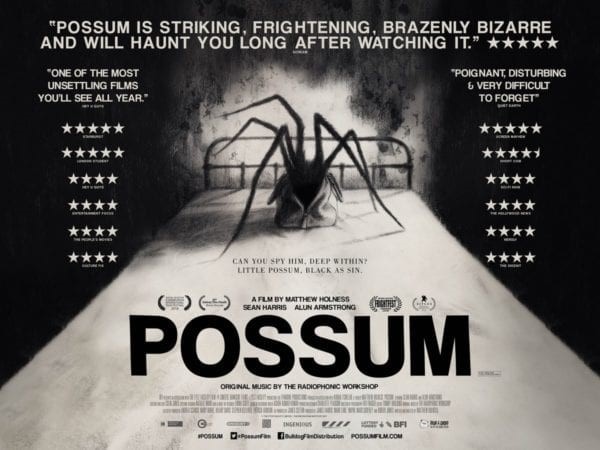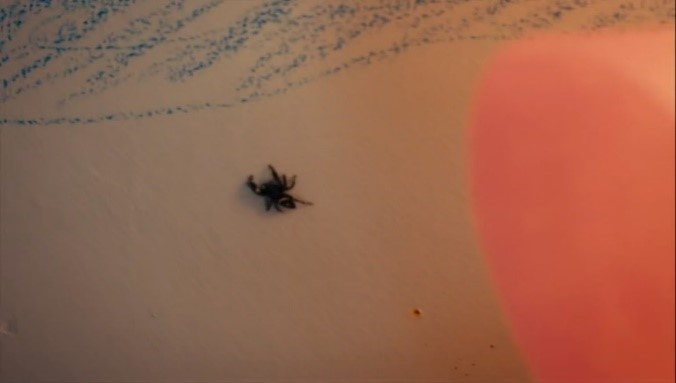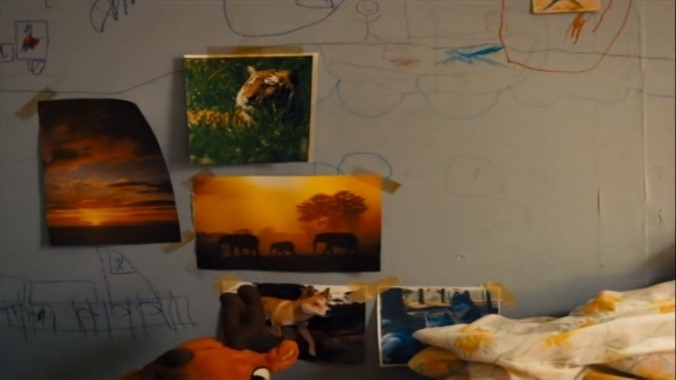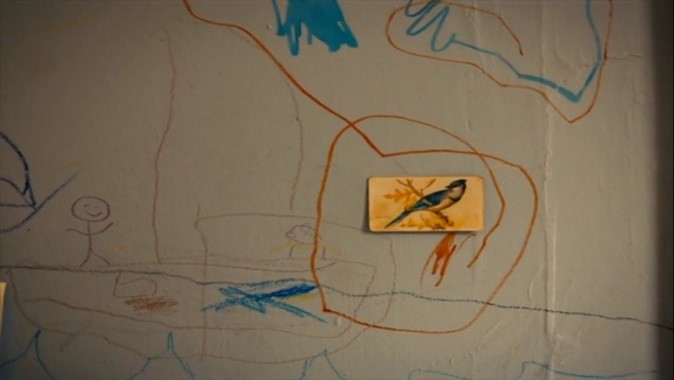Andrea Arnold’s films are renowned for their nuanced focus upon human behaviour. However, as Michael Lawrence recognises in his analysis of her 2011 adaptation of Wuthering Heights, Arnold ‘privileges the natural environment and its non-human inhabitants as characters in their own right’.[1] This scene is no different, as even within the interior setting Arnold utilises non-human inhabitants to quietly comment upon the suffering of eighteen-year old protagonist, Star. There is an overt contrast between the mundane, at times gross, animality of the animals within Star’s reality, and the exotic nature of the two-dimensional animals which pattern the walls of her home. Arnold foregrounds this contrast, calling into question the void between mythic ideas of nature and the comparatively underrepresented reality of Star’s poverty.
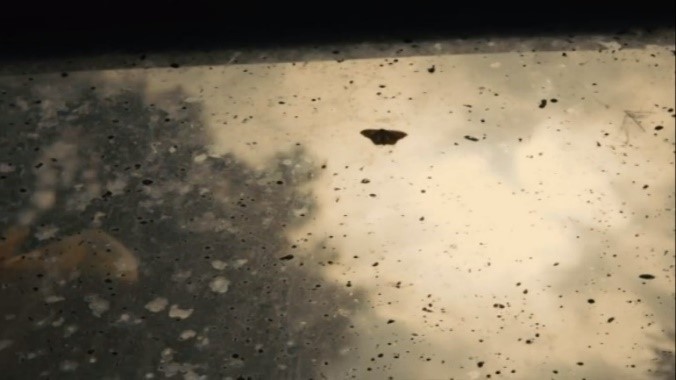
Arnold uses a low angle shot of a butterfly struggling against a filthy window. The natural outdoor backlight allows only a small silhouette of the creature to be seen, therefore concealing the intricacies and colour associated with traditional images of butterflies. The entrapment of the usually beautiful creature outlines an intrinsic connection between the natural world and Star’s own constricted existence. The creature exists alongside Star, both occupying the claustrophobic space in quiet companionship, mutually seeking escape.
The scene cuts to a close-up tracking shot of a small spider moving steadily across a scrawled bedroom wall. Although spiders are commonplace within homes, Arnold challenges the prejudice against arachnids through her unapologetic focus upon the creature. The spider, usually omitted from cinematic ecology unless to elicit fear or distaste, is granted its own spotlight. Similarly, Arnold’s cinematic works give an unprecedented focus to marginalised human subjects, such as Star, who are usually denied subjectivity in cinema. However, the parallel between the arachnoid and Star does not extend beyond their ostracised treatment. Arnold’s camera movements linger over the spider illustrating its unusual confidence, providing an uncomfortable contrast to Star’s own tentative movements within her home.
The focus upon common household animals is disturbed as attention shifts towards the images of exotic wild animals taped haphazardly to the defaced bedroom wall. Although Arnold offers very little explanation of the room, the series of striking images suggest a childlike fascination with animals, perhaps Star’s own interest. This notion works to contradict the hardened image of Star we have already encountered, instead indicating interests and aspirations beyond her oppressive home.
There is an uncomfortable irony to the polished stock images against the mess of the room, they elicit a feeling akin to bathos as they appear too perfect, almost ridiculous amongst the deprivation of Star’s surroundings. For example, the small ornithological drawing of a bird is circled in childlike crayon scrawl. (insert figure 5) The two forms of artistry alongside one another foreground the incongruency of the image. The two-dimensional images participate in a conventional discourse of filmed animality. However, Arnold abruptly juxtaposes this against a brief close-up shot of some tadpoles swimming inside a dirty plastic bottle, thus framing the refined images with a comparatively raw animality. Therefore, through a broad scope of ecology and focus upon the unassuming and underprivileged Star, Arnold offers a refreshing diversity, incorporating unlikely subjects within both human and animal spheres.
[1] Michael Lawrence, ‘Nature and the Non-human in Andrea Arnold’s Wuthering Heights.’ Journal of British Cinema and Television, 13.1 (2016), 177-94 < http://dx.doi.org/10.3366/jbctv.2016.030> (p.179).
